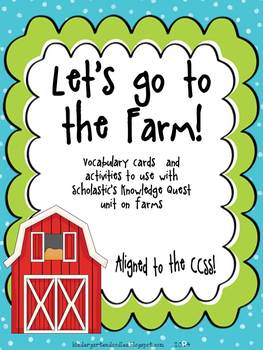Hi! This is Linda from Kinder Doodles again. I am a kindergarten teacher at a small rural school in Northwest Indiana. There are eighteen little cuties in my class this year, and we are having so much fun together!
One of the areas that I like to focus on is building vocabulary. I was fortunate to have the opportunity to attend a workshop that focused on strategies for improving vocabulary led by Dr. Anita Archer, an educational consultant on explicit instruction. Her presentation was dynamic and informative ~ a workshop filled with ideas that I was excited to take back into my classroom and try. Not only did I try some of her ideas, I am still doing them!
In order to provide explicit vocabulary instruction, begin by choosing three to ten words that pertain to your selection (book, chapter, content area) that are words that students will most likely encounter in other places. Your word choice will of course depend upon your grade level. Here is a picture of the vocabulary words in my Hibernation Mini Unit. As you can see I selected words that my students would hear in the books we read as we studied hibernation.
To begin instruction, I showed the students the vocabulary word card as I pronounced the word. I then had my Kinders repeat the word. We clapped the beats in the word, and repeated the word several times. It is important that students are actually able to say the words they are going to learn! I gave a simple definition of each word & had the kids repeat the definition several times. To help my little students to be able to read the words I added a related picture. (The pictures were very helpful when the kiddos referred to the chart when writing.)
Another practice that I have found my students enjoy is using hand motions when chorally saying the definition. In October when we studied the pumpkin life cycle, we used hand motions to help remember the meanings of sprout, vine, and ripe. Adding a kinesthetic element to vocabulary instruction can really help some students to learn new words.
Mrs. Archer recommends that vocabulary words aren't just stuck onto the word wall in alphabetical order. Instead, she feels that vocabulary words are best presented as groups of words that "go together." (Alphabetically arranged word walls are more suitable to high frequency words.) My Kinders helped to generate this list for a reference as writing, but it is an example of a what content vocabulary chart might look like. I sketched little pictures to help the students know read the words. (They may not be very artistic, but five & six year old kids are impressed by my drawings! lol)
I like to use Scholastic's Knowledge Quest sets when studying content areas. I have found that they are also a great resource for vocabulary instruction. I have created a set of vocabulary cards & activity pages for their "Let's Visit a Farm!" set that is available on my TpT store.
Click HERE a sample for you to use with the book An Orange in January.
One quote about the importance of early vocabulary instruction from her presentation that really stuck with me was, "direct vocabulary instruction has an impressive track record of improving students' background knowledge and comprehension of academic content" (Marzano, 2001)
Please visit my blog, Kinder Doodles for a peek into my little country school. Thanks for reading!







The term Meaning Vocabulary entails how individuals learn the meaning of words. Therefore, in an effort to facilitate meaning vocabulary one can employ the use of Word Part Instruction, Context Clues and Graphic Organizers.
ReplyDeleteSimilarly https://vocabmonk.com helps in building the vocabulary of an individual.
I think this is a really good article. You make this information interesting and engaging. You give readers a lot to think about and I appreciate that kind of writing. https://www.seoexpertindelhi.in/google-word-coach/
ReplyDelete